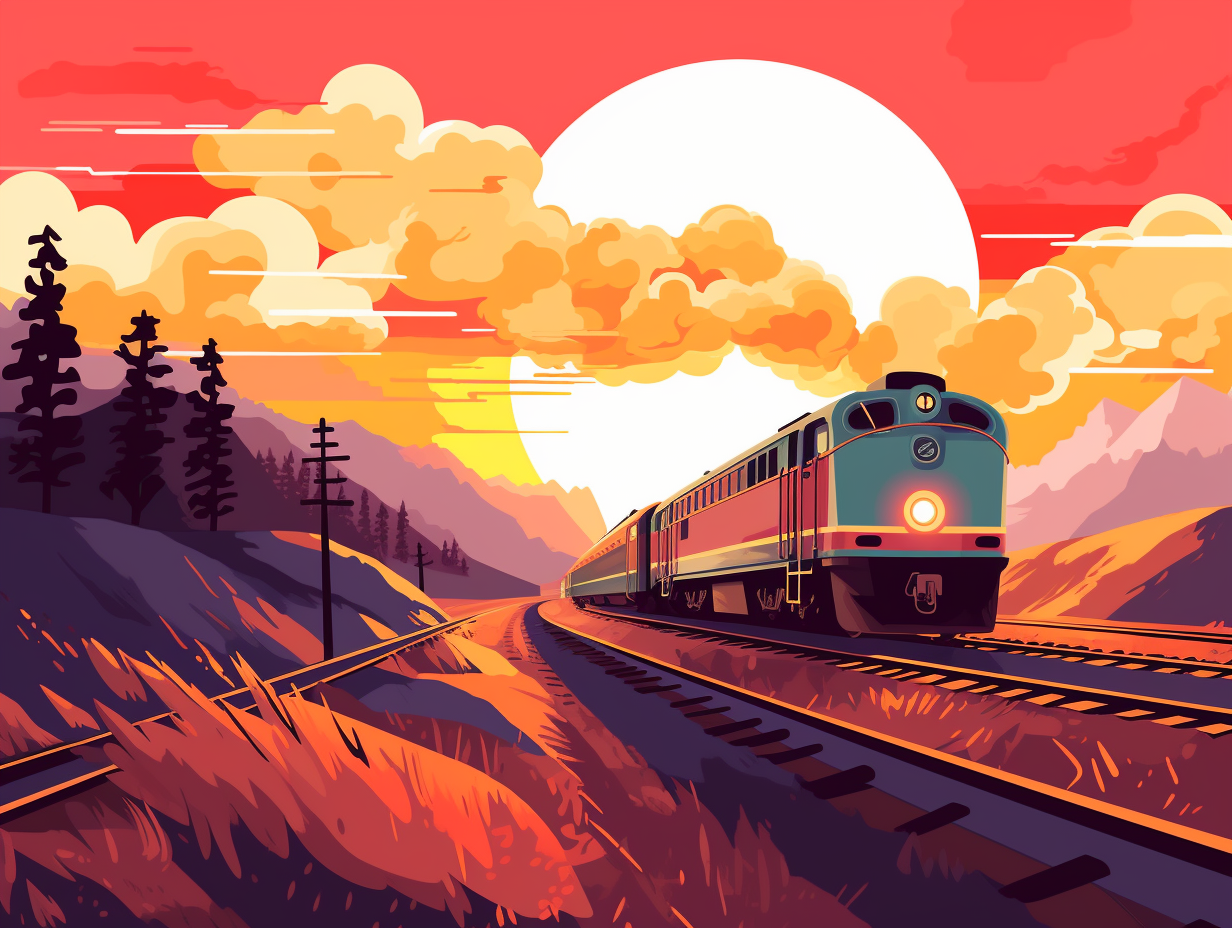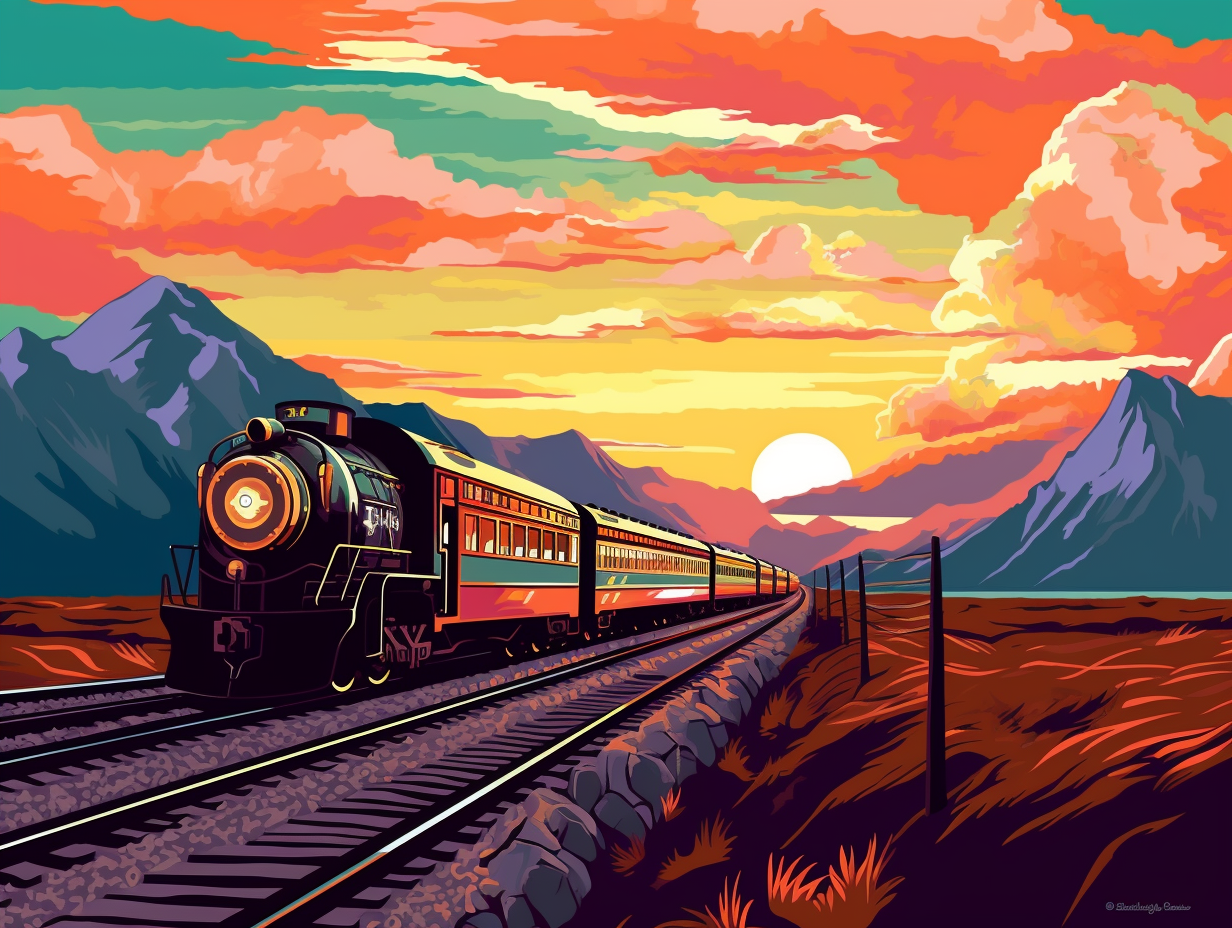Uncovering the Secrets: Top 13 Fun Facts About the Trans-Siberian Railroad Journey

1. The Ultimate Express Ride
Whoever said "it's not the destination, it's the journey" must have been a big fan of this Trans-Siberian express ride: The Trans-Siberian Railway actually consists of several branches, crossing 9,200 kilometers of terrain through Russia, China, and Mongolia, stretching across eight time zones and serving as one of the busiest railway routes in the world for both passengers and freight trains.
Source => htschool.hindustantimes.com
2. Literary Time-Travel Journey
As the Trans-Siberian Railway chugs along, it has time to discuss Russian novels, prepare borscht, and try on fur hats: it crosses a staggering eight time zones on its world-famous route between Moscow and Vladivostok, making it the longest railway on Earth, spanning 9,289 kilometers (5,772 miles). Fret not, shorter options exist on the Trans-Mongolian and Trans-Manchurian lines, completing the journey in as few as five days!
Source => russiantrain.com

Dive into the unique world of Lake Baikal, where 80% of its flora and fauna are exclusive to its waters! Meet the Baikal seal and Omul fish that play a crucial role in the region's economy and culture. 🌊🐟🦭
=> Fun Facts about Lake-Baikal
3. Bogie-Swap Free Adventure
Hold on to your bogies, folks: The Trans-Siberian Railway not only boasts a track gauge of 1,520 mm (4 ft 11+27⁄32 in), making it the second-most common in the world (after the standard 1,435 mm), but also spans Russia with over 225,000 km (140,000 mi) of track, all without ever needing to stop and swap those bogies! Bonus: Russia, Mongolia, and China all play nice with the same gauge, so no awkward trade-offs at the borders, either.
Source => en.wikipedia.org
4. Intriguing French Connection
It's no secret that the French adore baguettes, fine wine, and constructing impossibly long train tracks: financing over 60% of the legendary Trans-Siberian Railway, the French's pivotal role in the railway's construction was cemented by a little known 1896 treaty, which included secret clauses against Japan and granted them rights over the line for 80 years.
Source => geopolitika.hu

5. Earth's Longest Railway Expedition
Choo-choo-choose your own adventure on this railway escapade that stretches from the heart of Russia and spans the infinite expanse of the world's largest continent: The Trans-Siberian Railway takes the title for the longest railway on Earth, measuring 9,289 km (5,772 mi) from Moscow to Vladivostok, crossing a jaw-dropping 7 time zones and a beautifully diverse set of landscapes that include forests, mountains, and even deserts.
Source => en.wikipedia.org
6. Tsar's Aquatic Roller Coaster
All aboard the Tsar's aquatic roller coaster: The Trans-Siberian Railway's original route takes passengers on a thrilling ride along Lake Baikal's picturesque shore, the world's deepest lake, treating them to the sights of breathtaking Siberian scenery and traditional villages that appear almost as frequently as pit stops at Moscow, Beijing's Tiananmen Square, and the Great Wall of China.
Source => thetranssiberiantravelcompany.com
7. Grandma Baikal's Waterpark
What do you get when you cross a 26-million-year-old grandmother with an affinity for freshwater fish? The world's deepest, oldest, and most fascinating waterpark, of course: Lake Baikal, nestled along the Trans-Siberian Railway's Baikal-Amur Mainline route, boasts depths of over a mile and houses 20% of the world's unfrozen freshwater, not to mention being a prime spot for catching its favorite Omul salmon – the true grand-dame of aquatic attractions!
Source => goworldtravel.com
8. Time Zones Galore!
Time travelers, hold onto your DeLoreans: The Trans-Siberian railway, spanning from Moscow to Vladivostok, passes through a whopping eight different time zones! Make sure to rev up your trusty flux capacitor as all timetables, station clocks, and train clocks in Russia stay set to Moscow time, while Mongolia and China operate on local time.
Source => onthegotours.com
9. Back to the (Railroad) Future
Ever wondered what it would be like to ride alongside Marty McFly and Doc Brown in the DeLorean, hopping through time zones like a kangaroo on steroids? Well, the Trans-Siberian Railroad might be the answer to your harebrained fantasies: The world's longest direct rail route takes you across eight different time zones, with station clocks and train clocks always set to Moscow time in Russia. When you cross into Mongolia and China, however, they switch back to local time in an effort to avoid any possible confusion during your unparalleled Back to the Future-style escapade.
Source => penguintravel.com

10. Epic Identity Crisis Adventure
Ever thought about taking a train ride that crosses two continents, eight time zones, and has a bit of an identity crisis with multiple branches? Well, buckle up for the Trans-Siberian Railway: the world's longest railway line covering 9,259 km (5,753 miles) across Russia, featuring three branches - Trans-Siberian, Trans-Mongolian, and Trans-Manchurian - each with unique routes through mesmerizing landscapes like the Mongolian Steppes, Gobi desert, Ural Mountains, and Baikal Lake.
Source => agatetravel.com
11. The Powerhouse of Russian Transport
Did you ever wonder what fueled the steam behind Russia's version of "Thomas the Tank Engine"? Behold, the mighty Trans-Siberian Railway: not only the world's lengthiest passenger choo-choo route, but also a critical artery in Russia's socioeconomic body, transferring a whopping 113.1 million tons of export-import cargo in 2015 and passing through areas that pump out 65% of Russia's coal and 25% of its timber. With connections to North Korea, China, Mongolia, Kazakhstan, and Europe, it's the iron spine holding the East and West together on the railroad express!
Source => globalrailwayreview.com
12. WWII's Underground Rave Party
Sayonara, rubber plants! The Trans-Siberian Railway moonlighted as a tire-carrying underground rave party during World War II: This vital railroad ferried life-saving rubber from Japan to Germany, prompting the US and UK to develop synthetic rubber alternatives. Plot twist: the same railway pulled a double agent act, chugging along many Jews fleeing Germany who sailed from Russia's Pacific coast to find refuge in the United States.
Source => comradekiev.com
13. Bridging China and Russia
When China and Russia decided to bridge the gap, they took it quite literally and built a railway bridge too: The Amur River railway bridge connects Mohe in China's Heilongjiang province with Dzhalinda in Russia's Sakha Republic, cutting 2,000km from current trade routes and boosting the Eastern Railway's export capacity to 10 million tonnes a year, all while giving Mother Nature a break in Yakutia.
Source => globalconstructionreview.com
Related Fun Facts




















